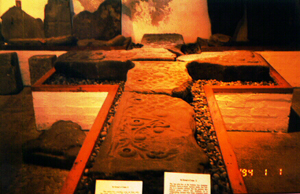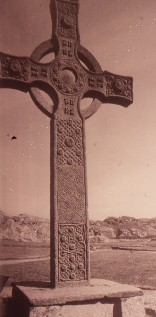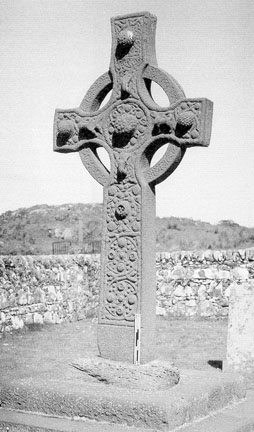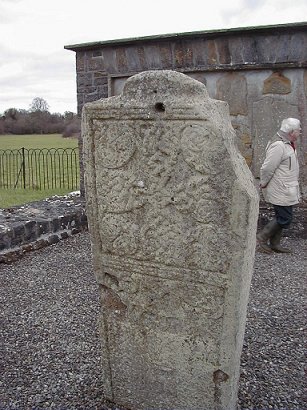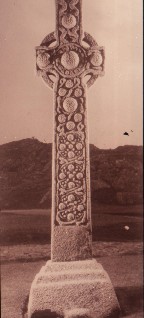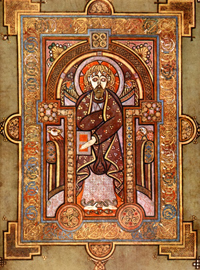Iona and the Book of Kells: Difference between revisions
No edit summary |
No edit summary |
||
| Line 19: | Line 19: | ||
[[Image:oc3.jpg]] | [[Image:oc3.jpg]] | ||
'''St. Oran’s cross:''' | '''[St. Oran’s cross]:''' | ||
[[Image:SJeast.jpg]] | [[Image:SJeast.jpg]] | ||
'''St John’s cross:''' | '''[St John’s cross]:''' | ||
[[Image:cross-kildalton9.jpg]] | [[Image:cross-kildalton9.jpg]] | ||
| Line 36: | Line 36: | ||
[[Image:SMAReast.jpg]] | [[Image:SMAReast.jpg]] | ||
'''St. Martin’s Cross:''' | '''[St. Martin’s Cross]:''' | ||
[[Image:mathkells.jpg]] | [[Image:mathkells.jpg]] | ||
Revision as of 15:06, 28 September 2006
Iona and the Book of Kells
Influences
Pictish and Northumbrian elements can be seen in the stone sculptures and other relics in Iona, but the role of Irish influence is not certain. The ringed cross, which can be seen on rectangular Pictish cross slabs, is a form that is also used by the Irish sculptors of the Ahenny group, and by Iona sculptors as well. There are two conflicting theories for this. First of these is that some believe that the ringed cross originated in Pictland, and erected on Iona by imported Pictish craftsmen, and “decorated with the Pictish snake and boss patterns also used on the carvings at Nigg and the St Andrews sarcophagus. Then the Ahenny group copied the style in their workshops. The second theory is that the Ahenny bosses inspired Iona’s.
Placement of Bosses
Ahenny: The bosses are at the junction of ring and arm or shaft, suggesting a functional role.
Pictish: The bosses are in places in a decorative manner. Animals play an important role.
Iona: The bosses are in places so that they serve in both a decorative manner as well as functional, but not at precise points of intersection with the arms. Animals do not play an important role.
Iona Crosses and Other Relics
St. Germain mounts:

